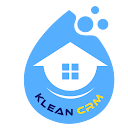Tracking templates are a great way to get very valuable data on how your cleaning business ads are doing and get insights on different aspects of your search ads campaign.
When it comes to search ads, the two big players in the game are Google and Microsoft…although Google is much bigger.
Both ad platforms are pretty similar in terms of how they work.
One of the similarities is their use of URL tracking parameters.
What Are URL Tracking Parameters
Google and Microsoft URL tracking parameter templates are the best way to keep track of different variables of your ad campaign.
URL tracking parameters are pieces of code that can be added to an advertisement URL in order to track the performance of ads and campaigns. By adding these parameters, marketers can identify which ads or campaigns were successful and why, as well as assess the ROI of their advertising investments. This information is essential for improving ad campaigns in the future.
Furthermore, tracking parameters make it easier to differentiate between organic traffic and paid traffic so that advertisers know where their money is going. In short, URL tracking parameters provide valuable insights into ad campaign performance and should be used whenever possible in order to ensure the best results.
By using these templates, we can easily see what pages are being visited on our site and how often they are being visited. These are variables that we can use and filter through for data later on.
The URL tracking templates track such things as:
- the ad that was triggered
- keyword the user found your ad through
- the campaign of the ad
- the ad group
- the network source of the traffic
- the device of the visitor
- keyword match type
- the geographic location of your visitor
- …and tons of other parameters
But the art in using tracking parameters is using the right parameters just to get you the pertinent information you need. No more. No less.
For instance, both Google and Microsoft have parameters for displaying the model of the device used to access your ads. I can’t imagine that is very important to know for your cleaning business.
Anyway, I’ve included the only tracking parameter template you will ever need to track your paid search ads on Google or Microsoft. You can set this at the account level so you only have to do it once…and not have to repeat it with every campaign. I’ll show you how below.
The URL Tracking Parameter Template I Use For My Cleaning Business
Here is the URL tracking parameter template I use to track my cleaning business search ads:
{lpurl}?network={network}&campaignid={campaignid}&adgroupid={adgroupid}&keyword={keyword}&device={device}
This displays which network the visitor came from (Google or Microsoft), the campaign, ad group, the keyword, and the device used to visit the site.
If you insert this, it will work for both Google and Microsoft ads.
Where to Insert The URL Tracking Parameters
As I said above, you should insert the tracking parameters at the account level so you don’t have to repeat this with every new campaign you start. Here is how to do it with both Google and Microsoft.
Inserting The URL Tracking Parameter in Microsoft Ads (Account-Level)
Once you’re inside your Microsoft Ads account, click on the left panel and go to All Campaigns>Overview>Account Level Options
Then insert the template into the box that says Tracking Template. See the example below:
Inserting The URL Tracking Parameter in Google Ads (Account-Level)
With Google Ads, it’s even simpler. Click on the left panel and go to Admin>Account Settings and then paste the template into the field where it says Tracking Template. See example below:
Yeap so that’s pretty much it. That’s all you have to do.For a full list of url parameters you can use, go here.




